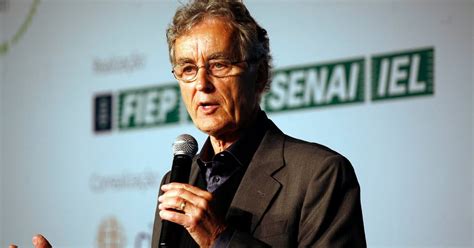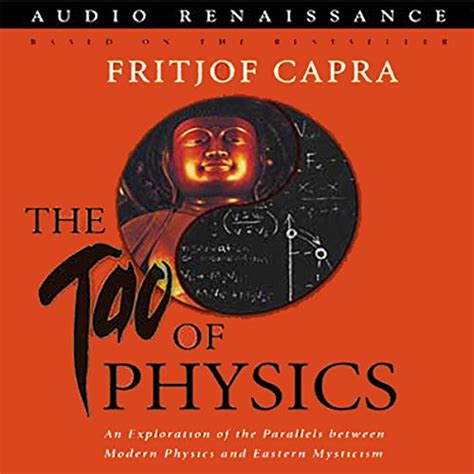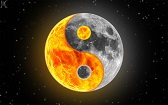|
home | what's new | other sites | contact | about |
|||
|
Word Gems exploring self-realization, sacred personhood, and full humanity
Quantum Mechanics
return to "Quantum Mechanics" main-page
website: https://www.fritjofcapra.net/ Excerpts from chapter two of Dr. Fritjof's book, The Tao Of Physics
two modes of consciousness, the rational and the intuitive Throughout history, it has been recognized that the human mind is capable of two kinds of knowledge, or two modes of consciousness, which have often been termed the rational and the intuitive, and have traditionally been associated with science and religion, respectively. In the West, the intuitive, religious type of knowledge is often devalued in favour of rational, scientific knowledge, whereas the traditional Eastern attitude is in general just the opposite. The following statements about knowledge by two great minds of the West and the East typify the two positions. Socrates in Greece made the famous statement ‘I know that I know nothing’, and Lao Tzu in China said, ‘Not knowing that one knows is best.’ In the East, the values attributed to the two kinds of knowledge are often already apparent from the names given to them. The Upanishads, for example, speak about a higher and a lower knowledge and associate the lower knowledge with various sciences, the higher with religious awareness. Buddhists talk about ‘relative’ and ‘absolute’ knowledge, or about ‘conditional truth’ and ‘transcendental truth’. Chinese philosophy, on the other hand, has always emphasized the complementary nature of the intuitive and the rational and has represented them by the archetypal pair yin and yang which form the basis of Chinese thought.
Accordingly, two complementary philosophical traditions, Taoism and Confucianism, have developed in ancient China to deal with the two kinds of knowledge. Rational knowledge is derived from the experience we have with objects and events in our everyday environment. It belongs to the realm of the intellect whose function it is to discriminate, divide, compare, measure and categorize. In this way, a world of intellectual distinctions is created; of opposites which can only exist in relation to each other, which is why Buddhists call this type of knowledge ‘relative’. Abstraction is a crucial feature of this knowledge, because in order to compare and to classify the immense variety of shapes, structures and phenomena around us we cannot take all their features into account, but have to select a few significant ones. Thus we construct an intellectual map of reality in which things are reduced to their general outlines. Rational knowledge is thus a system of abstract concepts and symbols, characterized by the linear, sequential structure which is typical of our thinking and speaking. In most languages this linear structure is made explicit by the use of alphabets which serve to communicate experience and thought in long lines of letters. rational knowledge wonderfully represents the cosmos via linear, sequential, no-nonsense thinking; unfortunately, in the real world, there are no straight lines, no flat surfaces, no predictable sequences, no regular shapes, with even 'empty space' a hotbed of activity; other than these limitations, rational knowledge does well The natural world, on the other hand, is one of infinite varieties and complexities, a multidimensional world which contains no straight lines or completely regular shapes, where things do not happen in sequences, but all together; a world where - as modern physics tells us - even empty space is curved. It is clear that our abstract system of conceptual thinking can never describe or understand this reality completely. In thinking about the world we are faced with the same kind of problem as the cartographer who tries to cover the curved face of the Earth with a sequence of plane maps. We can only expect an approximate representation of reality from such a procedure, and all rational knowledge is therefore necessarily limited. The realm of rational knowledge is, of course, the realm of science which measures and quantifies, classifies and analyses. The limitations of any knowledge obtained by these methods have become increasingly apparent in modern science, and in particular in modern physics which has taught us, in the words of Werner Heisenberg, ‘that every word or concept, clear as it may seem to be, has only a limited range of applicability.” we tend to confuse reality with our limited ideas of it For most of us it is very difficult to be constantly aware of the limitations and of the relativity of conceptual knowledge. Because our representation of reality is so much easier to grasp than reality itself, we tend to confuse the two and to take our concepts and symbols for reality. It is one of the main aims of Eastern mysticism to rid us of this confusion. Zen Buddhists say that a finger is needed to point at the moon, but that we should not trouble ourselves with the finger once the moon is recognized… the map is not the territory In the West, the semanticist Alfred Korzybski made exactly the same point with his powerful slogan, ‘The map is not the territory.’ what we need, as Krishnamurti pointed out, is a 'total field' experience of reality, an immediate and direct access, one that circumvents the rational What the Eastern mystics are concerned with is a direct experience of reality which transcends not only intellectual thinking but also sensory perception… Knowledge which comes from such an experience is called ‘absolute knowledge’ by Buddhists because it does not rely on the discriminations, abstractions and classifications of the intellect which, as we have seen, are always relative and approximate. It is, so we are told by Buddhists, the direct experience of undifferentiated, undivided, indeterminate ‘suchness’. Complete apprehension of this suchness is not only the core of Eastern mysticism, but is the central characteristic of all mystical experience. The Eastern mystics repeatedly insist on the fact that the ultimate reality can never be an object of reasoning or of demonstrable knowledge. It can never be adequately described by words, because it lies beyond the realms of the senses and of the intellect from which our words and concepts are derived. The Upanishads say about it: There the eye goes not, Speech goes not, nor the mind. We know not, we understand not How one would teach it. Lao Tzu, who calls this reality the Tao, states the same fact in the opening line of the Tao Te Ching: ‘The Tao that can be expressed is not the eternal Tao.’ in the thousands of years of humankind's history, if ultimate reality could have been known, 'everybody would have told his brother' and we'd all know by now The fact - obvious from any reading of the newspapers - that mankind has not become much wiser over the past two thousand years, in spite of a prodigious increase in rational knowledge, is ample evidence of the impossibility of communicating absolute knowledge by words. As Chuang Tzu said, ‘If it could be talked about, everybody would have told their brother.‘ Absolute knowledge is thus an entirely non-intellectual experience of reality, an experience arising in a non-ordinary state of consciousness which may be called a ‘meditative’ or mystical state. That such a state exists has not only been testified by numerous mystics in the East and West but is also indicated by psychological research. In the words of William James: Our normal waking consciousness, rational consciousness as we call it, is but one special type of consciousness, whilst all about it, parted from it by the filmiest of screens, there lie potential forms of consciousness entirely different. Although physicists are mainly concerned with rational knowledge and mystics with intuitive knowledge, both types of knowledge occur in both fields. This becomes apparent when we examine how knowledge is obtained and how it is expressed, both in physics and Eastern mysticism. In physics, knowledge is acquired through the process of scientific research which can be seen to proceed in three stages. The first stage consists in gathering experimental evidence about the phenomena to be explained. In the second stage, the experimental facts are correlated with mathematical symbols and a mathematical scheme is worked out which interconnects these symbols in a precise and consistent way. Such a scheme is usually called a mathematical model or, if it is more comprehensive, a theory. This theory is then used to predict the results of further experiments which are undertaken to check all its implications. At this stage, physicists may be satisfied when they have found a mathematical scheme and know how to use it to predict experiments. But eventually, they will want to talk about their results to non-physicists and will therefore have to express them in plain language. This means they will have to formulate a model in ordinary language which interprets their mathematical scheme. Even for the physicists themselves, the formulation of such a verbal model, which constitutes the third stage of research, will be a criterion of the understanding they have reached. In practice, of course, the three stages are not neatly separated and do not always occur in the same order. For example, a physicist may be led to a particular model by some philosophical belief he (or she) holds, which he may continue to believe in, even when contrary experimental evidence arises. He will then - and this happens in fact very often - try to modify his model so that it can account for the new experiments. But if experimental evidence continues to contradict the model he will eventually be forced to drop it. the scientific method, based on observation and experience, has its counterpart in Eastern lore This way of basing all theories firmly on experiment is known as the scientific method and we shall see that it has its counterpart in Eastern philosophy. Greek philosophy, on the other hand, was fundamentally different in that respect. Although Greek philosophers had extremely ingenious ideas about nature which often come very close to modern scientific models, the enormous difference between the two is the empirical attitude of modern science which was by and large foreign to the Greek mind. The Greeks obtained their models deductively from some fundamental axiom or principle and not inductively from what had been observed. On the other hand, of course, the Greek art of deductive reasoning and logic is an essential ingredient in the second stage of scientific research, the formulation of a consistent mathematical model, and thus an essential part of science. Rational knowledge and rational activities certainly constitute the major part of scientific research, but are not all there is to it. The rational part of research would, in fact, be useless if it were not complemented by the intuition that gives scientists new insights and makes them creative. These insights tend to come suddenly and, characteristically, not when sitting at a desk working out the equations, but when relaxing, in the bath, during a walk in the woods, on the beach, etc. During these periods of relaxation after concentrated intellectual activity, the intuitive mind seems to take over and can produce the sudden clarifying insights which give so much joy and delight to scientific research. Intuitive insights, however, are of no use to physics unless they can be formulated in a consistent mathematical framework, supplemented by an interpretation in plain language. Abstraction is a crucial feature of this framework. It consists, as mentioned before, of a system of concepts and symbols which constitute a map of reality. This map represents only some features of reality; we do not know exactly which these are, since we started compiling our map gradually and without critical analysis in our childhood. The words of our language are thus not clearly defined. They have several meanings, many of which pass only vaguely through our mind and remain largely in our subconscious when we hear a word. The inaccuracy and ambiguity of our language is essential for poets who work largely with its subconscious layers and associations. Science, on the other hand, aims for clear definitions and unambiguous connections, and therefore it abstracts language further by limiting the meaning of its words and by standardizing its structure, in accordance with the rules of logic. The ultimate abstraction takes place in mathematics where words are replaced by symbols and where the operations of connecting the symbols are rigorously defined. In this way, scientists can condense information into one equation, i.e. into one single line of symbols, for which they would need several pages of ordinary writing. Does mathematics represent certainty? The view that mathematics is nothing but an extremely abstracted and compressed language does not go unchallenged. Many mathematicians, in fact, believe that mathematics is not just a language to describe nature, but is inherent in nature itself. The originator of this belief was Pythagoras who made the famous statement ‘All things are numbers’ and developed a very special kind of mathematical mysticism… In the Eastern view, mathematics, with its highly differentiated and well defined structure, must be seen as part of our conceptual map and not as a feature of reality itself. Reality, as experienced by the mystic, is completely indeterminate and undifferentiated. The scientific method of abstraction is very efficient and powerful, but we have to pay a price for it. As we define our system of concepts more precisely, as we streamline it and make the connections more and more rigorous, it becomes increasingly detached from the real world. Using again Korzybski’s analogy of the map and the territory, we could say that ordinary language is a map which, due to its intrinsic inaccuracy, has a certain flexibility so that it can follow the curved shape of the territory to some degree. As we make it more rigorous, this flexibility gradually disappears, and with the language of mathematics we have reached a point where the links with reality are so tenuous that the relation of the symbols to our sensory experience is no longer evident. This is why we have to supplement our mathematical models and theories with verbal interpretations, again using concepts which can be understood intuitively, but which are slightly ambiguous and inaccurate… When the Eastern mystics talk about ‘seeing’, they refer to a mode of perception which may include visual perception, but which always and essentially transcends it to become a non-sensory experience of reality. What they do emphasize, however, when they talk about seeing, looking or observing, is the empirical character of their knowledge. This empirical approach of Eastern philosophy is strongly reminiscent of the emphasis on observation in science and thus suggests a framework for our comparison. The experimental stage in scientific research seems to correspond to the direct insight of the Eastern mystic, and the scientific models and theories correspond to the various ways in which this insight is interpreted. The parallel between scientific experiments and mystical experiences may seem surprising in view of the very different nature of these acts of observation. Physicists perform experiments involving an elaborate teamwork and a highly sophisticated technology, whereas mystics obtain their knowledge purely through introspection, without any machinery, in the privacy of meditation. Scientific experiments, furthermore, seem to be repeatable any time and by anybody, whereas mystical experiences seem to be reserved for a few individuals at special occasions. A closer examination shows, however, that the differences between the two kinds of observation lie only in their approach and not in their reliability or complexity… silencing the rational mind is the key to the 'discontinuous jumps' of creativity The basic aim of these [Eastern] techniques seems to be to silence the thinking mind and to shift the awareness from the rational to the intuitive mode of consciousness. In many forms of meditation, this silencing of the rational mind is achieved by concentrating one’s attention on a single item, like one’s breathing… Eastern mysticism is based on direct insights into the nature of reality, and physics is based on the observation of natural phenomena in scientific experiments. In both fields, the observations are then interpreted and the interpretation is very often communicated by words. Since words are always an abstract, approximate map of reality, the verbal interpretations of a scientific experiment or of a mystical insight are necessarily inaccurate and incomplete. Modern physicists and Eastern mystics alike are well aware of this fact. In physics, the interpretations of experiments are called models or theories and the realization that all models and theories are approximate is basic to modern scientific research. Thus the aphorism of Einstein, ‘As far as the laws of mathematics refer to reality, they are not certain; and as far as they are certain, they do not refer to reality.’ Physicists know that their methods of analysis and logical reasoning can never explain the whole realm of natural phenomena at once and so they single out a certain group of phenomena and try to build a model to describe this group. In doing so, they neglect other phenomena and the model will therefore not give a complete description of the real situation. what we know, or attempt to know, is always incomplete The phenomena which are not taken into account may either have such a small effect that their inclusion would not alter the theory significantly, or they may be left out simply because they are not known at the time when the theory is built. To illustrate these points, let us look at one of the best known models in physics, Newton’s ‘classical’ mechanics… Newtonian mechanics was for a long time considered to be the final theory for the description of all natural phenomena, until electric and magnetic phenomena, which had no place in Newton’s theory, were discovered. The discovery of these phenomena showed that the model was incomplete, that it could be applied only to a limited group of phenomena, essentially the motion of solid bodies… Today we know that the Newtonian model is valid only for objects consisting of large numbers of atoms, and only for velocities which are small compared to the speed of light… This does not mean that Newton’s model is ‘wrong’, or that quantum theory and relativity theory are ‘right’. All these models are approximations which are valid for a certain range of phenomena. Beyond this range, they no longer give a satisfactory description of nature and new models have to be found to replace the old ones - or, better, to extend them by improving the approximation… The Eastern mystics, too, are well aware of the fact that all verbal descriptions of reality are inaccurate and incomplete. The direct experience of reality transcends the realm of thought and language, and, since all mysticism is based on such a direct experience, everything that is said about it can only be partly true. In physics, the approximate nature of all statements is quantified and progress is made by improving the approximations in many successive steps…
Elenchus. I took special note of the statement, "The basic aim of these [Eastern] techniques seems to be to silence the thinking mind and to shift the awareness from the rational to the intuitive." Kairissi. It's very interesting, isn't it. It's as if the thinking mind, with its vaunted logic and reason, is secondary, superseded by the intuitive. E. If the great insights come by finding the "off switch" for the chattering in the head, if that's the way forward here, then the directive seems to be that the intuitive realm is our primary, natural home. K. If the "true self" is linked to Universal Consciousness, and not the thinking mind, then I think we're meant to infer that "opening a channel" to Higher Wisdom is no optional activity.
|
|||
|
|





